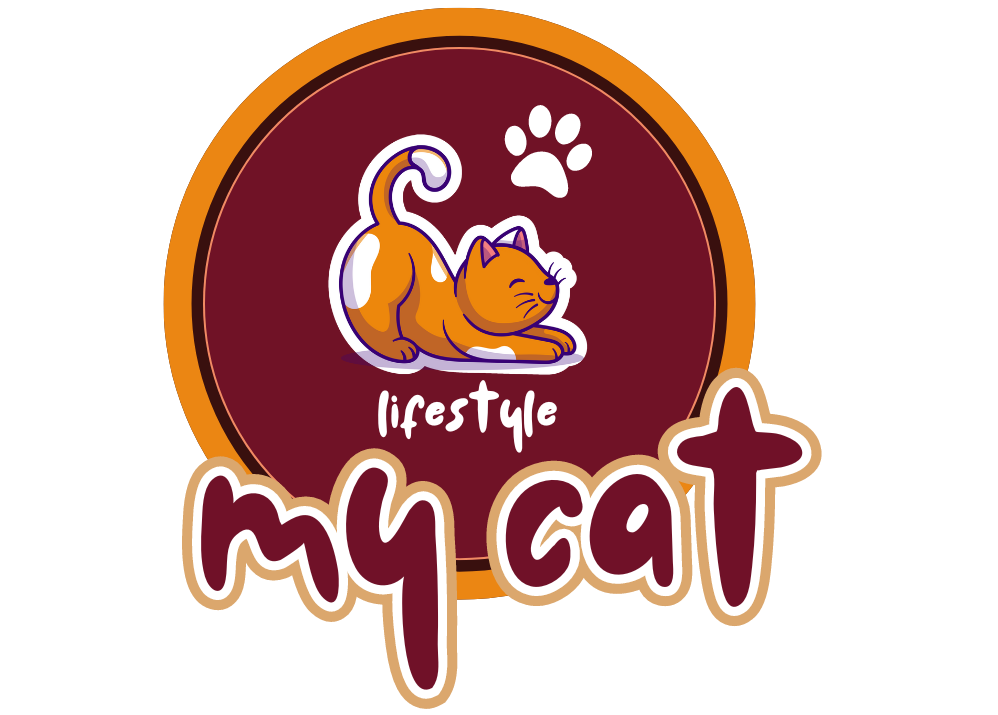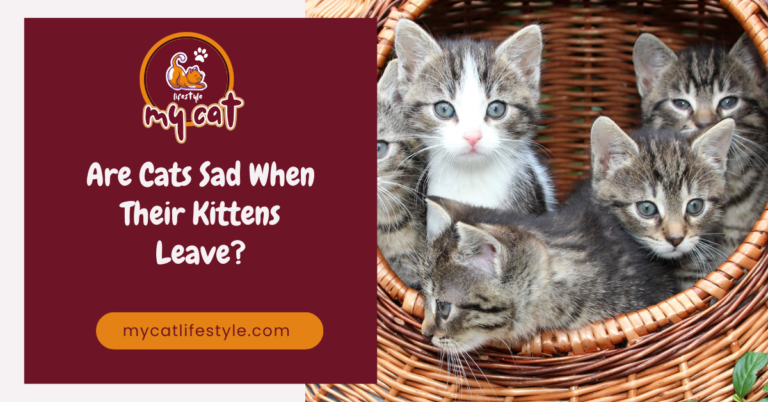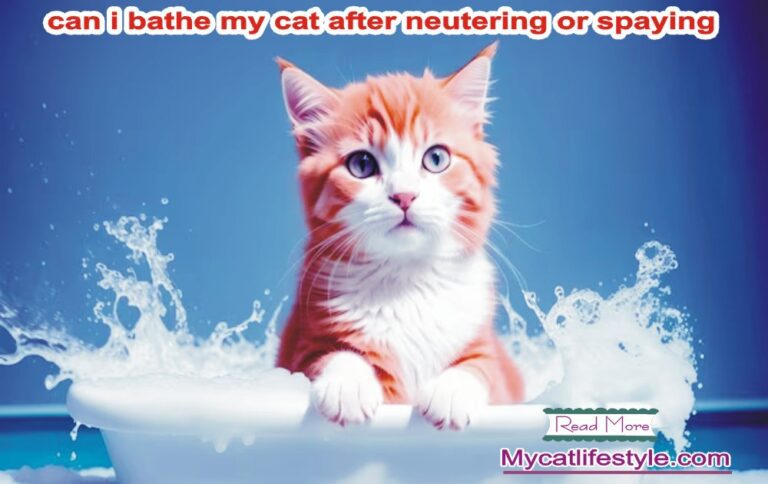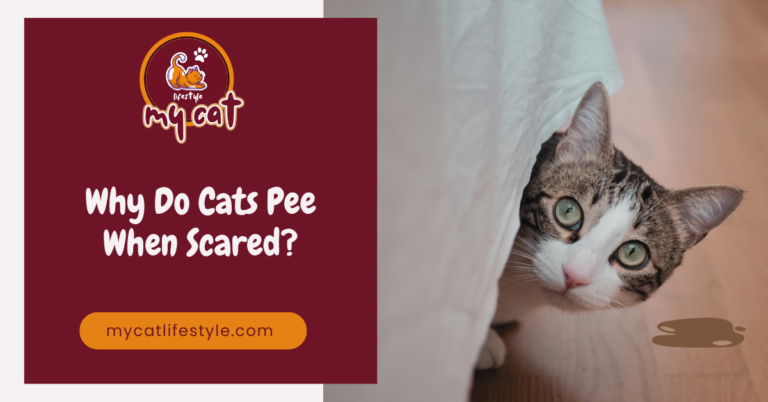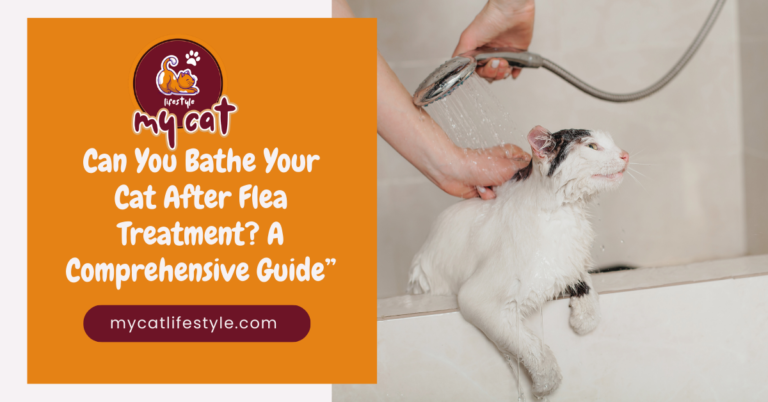Top 10 Ways to Keep Your Indoor Cat Happy and Entertained: Stress Reduction Techniques
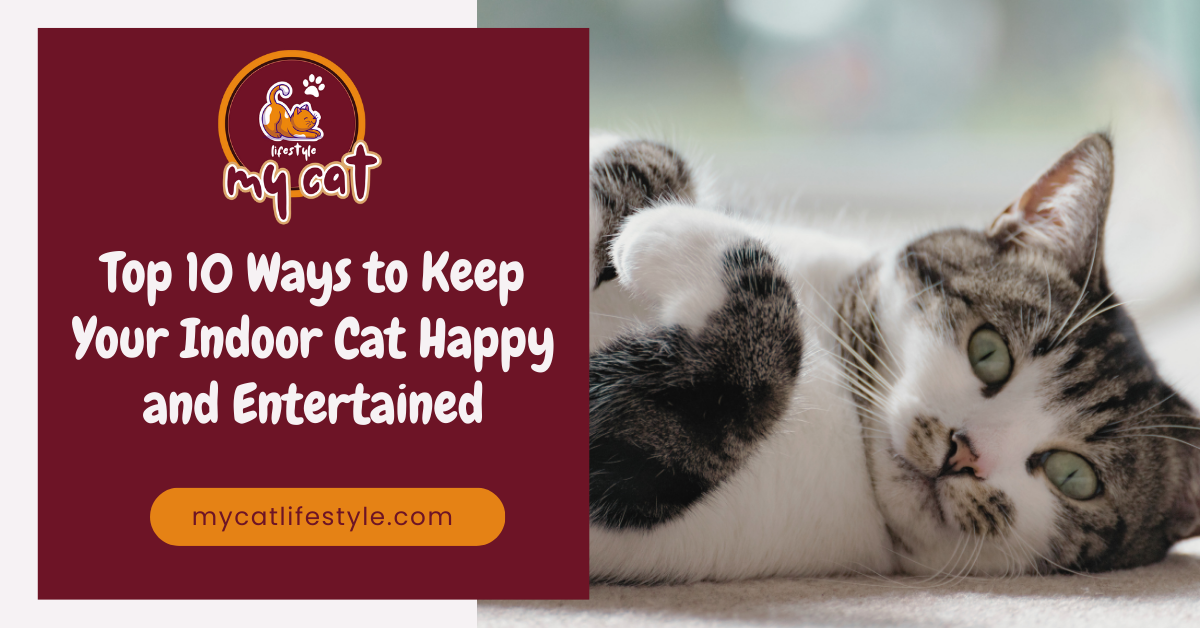
Caring for indoor cats often feels like a mystery wrapped in whiskers, but understanding their basic needs and instincts can turn your home into a feline paradise.
Dr. Jillian Orlando, DVM, at the Carolina Veterinary Behavior Clinic in Raleigh, North Carolina, emphasizes that although some might think of cats as low-maintenance pets, they actually require as much effort from owners to ensure their happiness and health as a dog would.
A key part of keeping your cat happy and healthy is to provide them with entertaining toys and regular playtime, which not only satisfies their stalking instinct but also keeps them stimulated and gives them the exercise they need.
In this blog, we will discuss Top 10 Ways to Keep Your Indoor Cat Happy and Entertained, introducing ways to create a feline-friendly environment at home. It involves more than just toys; it means transforming your living space into a place that meets all of your cat’s needs. Keeping your cat entertained helps avoid boredom, stress, and disease, and protects local wildlife by providing safe outlets for their predatory skills.
Regularly playing with your cat and providing them with opportunities to use their natural behaviors safely within the confines of your home can make a significant difference in their overall well-being.
By implementing these expert secrets, you not only ensure an enriched life for your feline but also deepen the bond you share. This is your intro hok.
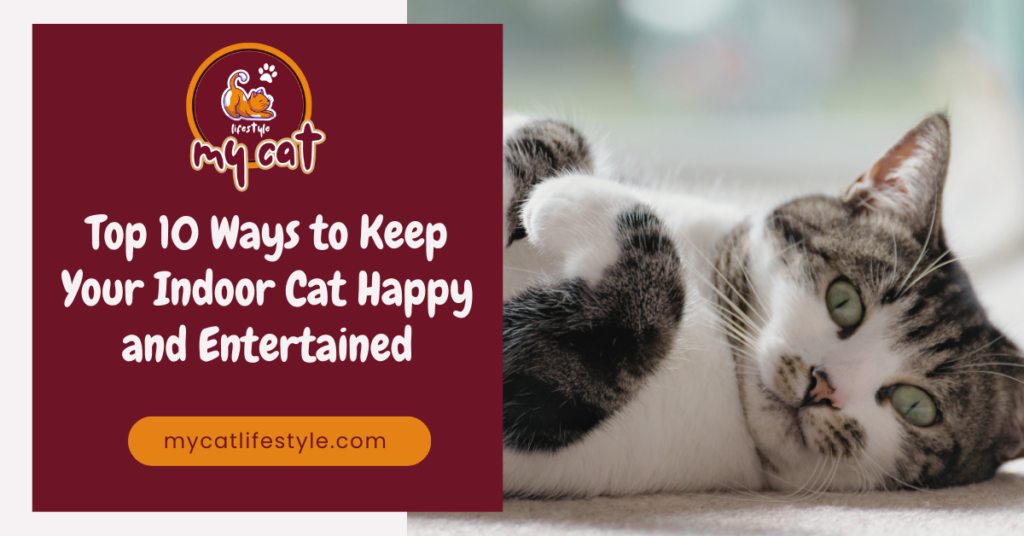
What is the best way to keep my indoor cat entertained and mentally stimulated?
Giving your cat fun and safe ways to enjoy the outside world from the comfort of home can make all the difference.
Most cats love watching birds and squirrels, so placing a bird feeder near a window can keep your cat thrilled for hours as they watch these creatures come and go. To enhance this, provide cat trees or shelves by the window—these serve as great perches, allowing your cat to look out and feel like part of the outdoors.
For those times when you’re gone, whether at work or school, ensuring your cat stays entertained and safe is crucial.
Toys that hang from doorknobs or door frames are perfect as they let your cat play independently. However, be mindful to use toys with thin elastic strings instead of regular string, yarn, or rope, which can get tangled and pose risks.
Additionally, cat tunnels can provide both a hiding spot and a fun obstacle for spontaneous sprints and pounces.
On a more comfy note, provide comfy beds or pads, and consider investing in heat reflecting pads that reflect your cat’s body heat, keeping them warm and cozy.
Spending time with your cat when you return and giving extra cuddles can also help them feel loved and secure.
Engage Your Cat’s Hunting Instincts During Mealtime
Dr. Kayla Whitfield from Lakemont Veterinary Clinic in Altoona, Pennsylvania, highlights that hunting is a vital and natural instinct for cats, which provides a great way for them to expend energy. This behavior involves seeking out prey, stalking, chasing, and biting. To keep your indoor cat satisfied, especially since they’re not hunting for their food, you can create mealtime games that mimic these actions.
Dr. Orlando suggests hiding small amounts of food in various locations around the house to engage your cat and utilize their hunting prowess during mealtime. This method not only entertains them but also taps into their natural behaviors.
Offering toys that simulate the hunting experience can also add excitement and challenge. For instance, the KONG Active treat ball or the SmartCat Peek-A-Prize toy box are excellent choices as they encourage cats to pounce, chase, and retrieve hidden treats.
These activities help satisfy their instincts and keep them entertained. Even simple, low-tech options like a shoe box with holes can serve as an effective and budget-friendly tool to stimulate your cat’s foraging behavior, ensuring they are both physically and mentally active.
Use Cat Interactive Toys
Dr. Orlando emphasizes the importance of keeping indoor cats actively engaged through the use of interactive toys. These toys are crucial not just for fun, but they also play a significant role in maintaining your cat’s physical and mental health.
Interactive toys that allow cats to carry out the components of their predatory sequence—including stalking, chasing, catching, and biting—are not only very rewarding but help prevent boredom.
For example, toys like the JW Cataction Wanderfuls or the KONG Active feather teaser are designed to move like birds or mice, providing your cat with a realistic hunting experience without the outdoors’ risks.
Moore also suggests rotating these toys to keep the novelty alive and kick your cat’s curiosity into high gear. It’s important to keep in mind, however, that while cats have individual preferences for the types of toys they like best, owners should use caution.
Ensure that any toys with strings are used under supervision, as they could pose a danger if left unattended. Plush mice, feathers, and toys that can be pulled on a string are all good options, but always make sure that any potential hazards are put away when you cannot directly supervise your pet.
This careful management of playtime accessories ensures a safe environment for your furry friend to explore their instincts safely.
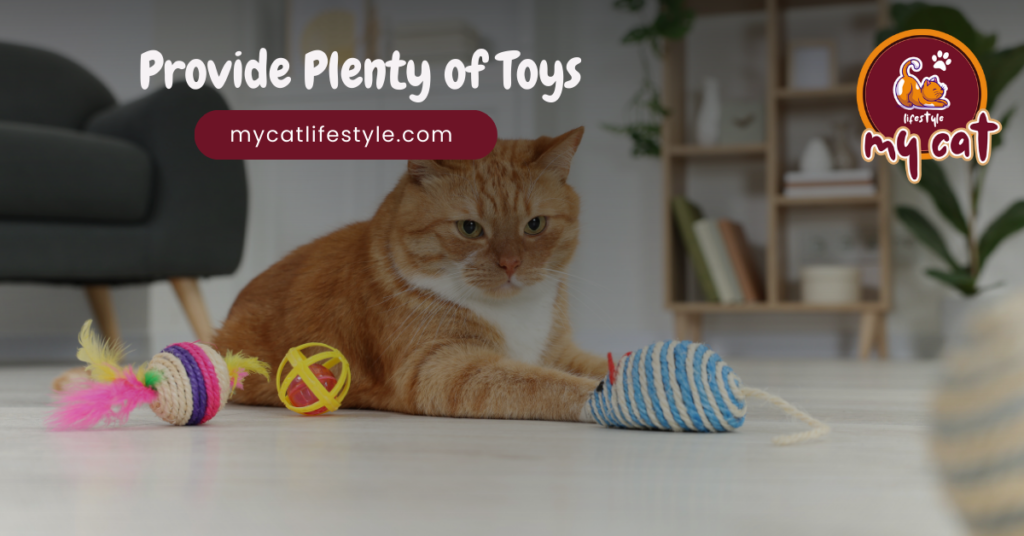
Provide Cat Scratchers
Dr. Whitfield highlights that scratching is a fundamental aspect of a cat’s life, serving both behavioral and physical health purposes. It’s an important behavior that helps cats mark their territory both visually and through scent. More than just marking, scratching also keeps a cat’s nails strong and healthy.
To prevent your furniture from becoming the victim of your cat’s natural instincts, it’s essential to provide cat scratchers that meet their needs.
Scratchers should cater to individual preferences; most cats typically prefer vertical surfaces they can dig their claws into, like sisal, rope, carpeting, or cardboard.
However, choosing the right scratcher requires understanding your cat’s scratching style. Dr. Orlando advises that while some cats prefer vertical setups, others opt for horizontal ones. Regardless of orientation, the surface must be sturdy and not wobble when used.
Offering a variety of scratchers in different shapes and materials can help keep your indoor cat happy and fulfill their instinctual needs safely within your home.
This strategic provision not only enhances your cat’s overall happiness and health but also integrates their natural behaviors smoothly into your domestic environment.
Reed more: Can I Move My Cat’s Litter box? How to Do It Without Stressing Your Cat
Add Vertical Space
Dr. Whitfield explains that cats, as both prey animals and predators, enjoy having vertical space to observe their surroundings and feel safe. To fulfill these instincts, owners should provide various elevated perches and hiding spots where cats can retreat and watch the world from above.
Cat trees, perches, and shelves not only help them get the elevation they crave but also enhance their sense of security in your home. These setups can include anything from Kitty condos like the Frisco 2-story cat condo to simple cardboard boxes with hidey holes—all designed to offer safety and comfort.
Furthermore, Dr. Whitfield recommends creating a special retreat for your cat, especially if there are children or other animals in the household. Giving your cat their own room, equipped with a cat gate, ensures they have a private space where they can’t be disturbed.
This dedicated area can be set up with a variety of cat houses or condos that provide secure spots for your feline family member to hang out and feel protected.
This approach not only helps keep your cat calm and content but also integrates their natural behaviors into your living space, making them a happy and integral part of the family.

Grow Cat-Safe Grass
Dr. Whitfield strongly suggests providing plant material indoors for cats to engage with. Offering things like wheat grass and catnip allows your kitties to chow down on greens that are safe and healthy.
These plants not only provide essential vitamins and fiber, but they also satisfy your cat’s natural curiosity and need to nibble on vegetation.
This type of setup helps keep indoor cats stimulated and can prevent them from turning your decorative houseplants into their salad bar.
Moreover, providing kitty-safe plants within the home environment does more than just benefit your cat’s diet; it can also help deter them from digging or eating other houseplants that might be harmful.
Dr. Whitfield notes that even though cats are carnivores, they can greatly benefit from having access to the right type of plant material. Incorporating these elements into your home can enhance your cat’s health and keep them entertained, especially when you’re not around to play.
Perfecting Your Cat’s Litter Box Setup
Dr. Whitfield emphasizes the importance of a proper setup for your cat’s litter box, a crucial aspect often overlooked in the quest to keep your cat happy.
Litter box setup and maintenance are vital for indoor enrichment, influencing not just cleanliness but also your cat’s overall wellbeing.
She advises against the common tendency to place litter boxes in out-of-the-way places like the basement, where they’re often small, covered, and filled with scented litter for human convenience.
Such setups might work for some, but they don’t always consider the preferences and comfort of your cat.
Instead, Dr. Whitfield recommends using large, uncovered litter boxes that respect a cat’s need for space and privacy without the intrusion of overpowering scents.
Unscented cat litter is preferable, as many cats are sensitive to perfumes that can deter them from using their box. Tailoring the litter box to meet the specific needs and preferences of your cat ensures they feel secure and respected in their environment, reducing stress and promoting healthy habits.
Read more: 11 Things Cats Hate and You Should Avoid
Bring Your Cat Outside
Dr. Whitfield strongly encourages cat owners to take their cats outside, provided they take proper precautions. For those looking to safely extend their cat’s territory, she recommends considering catios—indoor/outdoor cat enclosures that allow cats to experience the outside world without the risks.
Catios are the current trend because they provide a safe area where cats can enjoy fresh air and partake in bird watching, stimulating their natural instincts in a controlled environment.
If your home doesn’t have the potential for a catio, Dr. Whitfield suggests using a cat harness for safe outdoor time. This allows for supervised exploration, which can be a thrilling adventure for an indoor cat.
Taking your cat outside with a harness helps enrich their lives with new sights, sounds, and smells, all while ensuring they stay safe under your watchful eye.
Get Involved With Cat Training
Moore suggests training your cat as a key form of stimulation. Training serves not only as wonderful enrichment but also as a great workout for your cat’s brain and a great way to bond with them.
It’s more than just teaching tricks; it involves teaching your kitty various cues and behaviors that can ensure their safety and well-being.From simple commands like sit and stay to more complex tricks to show friends, training helps keep your cat safe and engaged, providing them with regular mental challenges.
Besides the usual play, Moore also highlights the benefits of leash-training. While not typical for every cat, those who adapt can enjoy controlled explorations outdoors, which greatly enriches their environment and reduces feelings of confinement.
This type of training allows cats to safely explore new environments under the watchful eye of their owners, thereby helping to keep them stimulated and content.

Importance of Environmental Enrichment for Cats
Cats are natural predators, and their genetic ‘jobs’ involve stalking, chasing, biting, and ripping apart prey. Moore explains that when cats do not have an outlet for this pent-up energy, they can get bored or stressed.
To prevent your cat from engaging in less desirable activities—the kind that humans won’t find fun—it’s crucial to give cats ways to exercise these natural instincts. Providing toys that mimic the hunt, such as moving mice or interactive feeders, can satisfy their primal needs and keep them mentally stimulated.
Interactive toys that allow cats to mark their territories through scratching and scenting are also essential. These activities are part of their natural instincts and help them feel more relaxed and content within the household.
By integrating these kinds of toys, you help ensure your cats remain active and engaged members of your home, preventing the typical behavior issues associated with understimulated indoor cats.
Read more: 8 Secret Signs Your Cat Loves You
Frequently Asking Questions
How do you keep indoor cats entertained and stimulated?
To keep your indoor cats both entertained and stimulated, it’s crucial to engage their natural instincts with interactive toys. Toys that mimic the hunting of prey, such as laser pointers or motorized mice, offer excellent mental and physical exercise. Setting up cat trees and shelves where they can climb and perch also helps satisfy their climbing urges and provides a good view, stimulating their minds while keeping them active.
How do I keep my cat entertained in the house?
Creating an interactive environment is key. Use puzzle feeders to make mealtime a challenge, which taps into their problem-solving skills. Rotate their toys to keep things fresh, and consider interactive sessions like playing with a wand toy or tossing a ball. This not only keeps them physically active but also strengthens your bond.
How to make indoor cats happier?
Indoor cats thrive on routine mixed with good stimulation. Beyond toys, consider cat-friendly plants they can sniff and chew, or a small indoor fountain for them to play with water. Social interaction, whether with you or another pet, can also significantly boost their happiness.
How do I stop my indoor cat from getting bored?
Preventing boredom is about diversity in activities and toys. Incorporate new forms of play regularly and engage in activities that challenge them both mentally and physically. Consider setting up a bird feeder by a window to provide hours of entertainment, or introduce new scents or small treats around the house for them to discover.
Wrapping Up
Ensuring your indoor cat remains happy and entertained involves more than just providing food and shelter. It’s about creating an environment that stimulates their natural instincts and nurtures their emotional health.
By integrating interactive toys, setting up engaging environments, and participating in daily playtimes, you help maintain their physical and mental well-being.
Remember, a stimulated cat is a happy cat, and the effort you put into enriching their lives not only prevents boredom but also fosters a deeper bond between you and your furry family member.
Make their world as expansive and interesting as possible, and you’ll both enjoy the benefits of a content and satisfied household companion.
